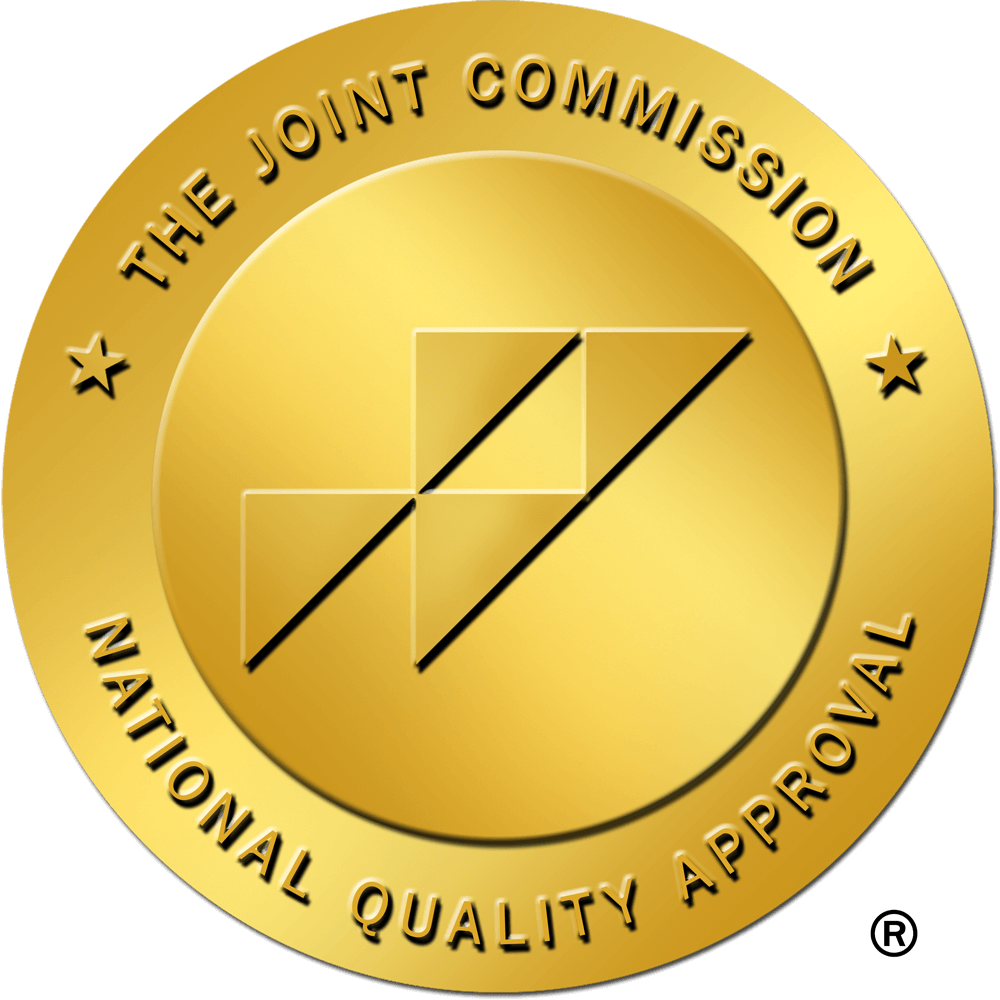Substance abuse and poor mental health overlap in many ways. Statistics from 2024 show that 37 percent of alcohol abusers and 53 percent of drug abusers also have at least one serious mental illness. Understanding the common mental disorders to coincide with addiction and help in identifying a dual diagnosis and receiving the right treatment.
In this blog, we’ll look at the following:
- What Comes First: Substance Abuse Or The Mental Health Problem?
- What Are The Commonly Occurring Disorders With Addiction?
- Common Risk Factors That Contribute To SUDS And Other Mental Disorders
- What Is Dual Diagnosis?
Table of Contents
ToggleWhat Comes First: Substance Abuse Or The Mental Health Problem?
Whether substance abuse or mental illness comes first will depend on the person. There are typically pre-existing mental health symptoms playing a role in the initial substance abuse, but this isn’t always the case. For example, a person may grow in their addiction to painkillers following being medically treated for a physical condition. They may not have had any prior mental illness, but the impact of drug abuse can lead to developing psychological problems.
In the same way, a person may reach for their drug of choice to cope with pre-existing mental health conditions like anxiety or depression. Regardless of which came first, co-existing mental illness and drug addiction have serious consequences that put a person’s life at risk.
What Are The Commonly Occurring Disorders With Addiction?

A person with addiction could have a plethora of disorders, but the most commonly seen among addicts include depression, anxiety, bipolar disorder, ADHD, and BPD. We’ll take a closer look at each of these below.
Depression
Clinical depression is characterized by persistent depressed moods or loss of interest in activities. Depression is one of the most common mental health disorders in the U.S. Currently, more than 21 million Americans are affected by depression, over 8% of the population.
What Is The Link Between Substance Abuse And Depression?
People who misuse drugs can physically alter their brain structure and function, increasing the risk of depression developing. Likewise, having depression due to genetics, life circumstances, or both can increase the powerful effect drugs have on the brain’s reward system. In other words, having depression prior to drug abuse can make a person more susceptible to the misuse as a form of unhealthy coping.
Common Signs And Symptoms Of Depression
- Persistent feelings of sadness
- Loss of interest in activities and hobbies
- Sleep changes (Oversleeping, night terrors, insomnia)
- Low energy levels
- Changes in appetite
- Low self-esteem
- Lack of motivation
- Thoughts of suicide
- Anxiety
- Mood swings
- Agitation or irritability
- Social isolation
- Lack of concentration
- Weight gain or loss
Anxiety Disorder
Anxiety, like depression, can develop into something more than just an emotion. If a person experiences constant or extreme anxiety, they may have an anxiety disorder. Anxiety disorders include panic attacks, obsessive-compulsive disorder, and post-traumatic stress disorder (PTSD).
Data from the National Institute on Drug Abuse shows high rates of co-existing substance use disorders and anxiety disorders. Abusing drugs is often accompanied by feelings of anxiety or panic, including misuse of medications designed to help with anxiety disorders. Just like other mental illnesses, people may abuse drugs to “cope” with their anxiety. Certain drugs like alcohol or Xanax may offer temporary relief but ultimately feed into the anxiety and addiction development.
Common Signs And Symptoms Of Anxiety
- Constant feelings of worry or fear
- Panic or anxiety attacks
- Extreme stress, especially unproportionate to its cause
- Social isolation
- Inability to subside worries
- Restlessness
- Sleep problems due to stress or overthinking
- Feeling on edge
- Tense muscles
- Inability to concentrate or focus on tasks
Bipolar Disorder
Bipolar disorder, formerly called manic depression, is associated with mood swings of extreme highs (manic highs) and lows (depressive lows). These emotions interfere with a person’s life by creating temporary manic and depressive episodes.
People with bipolar disorder may struggle with impulsiveness and extreme thinking that contributes to the misuse of drugs. Similarly, drugs can be a gateway to experiencing manic and depressive symptoms even if a person didn’t have bipolar disorder before the alcohol or drug abuse. Drugs can worsen the symptoms of bipolar disorder and create an addictive cycle of abuse that requires professional intervention to treat.
Common Signs and Symptoms Of Mania In Bipolar Disorder
- Mood swings of extreme highs and lows
- Unmanaged anger
- Anxiety
- Impulsiveness
- Euphoria
- General discontent
- Hopelessness, thoughts of suicide
- Loss of interest in activities and hobbies
- Risk-taking behavior
- Excess desire for sex
- Hyperactivity
- Delusion
- Sleep problems

ADHD
Attention-Deficit Hyperactivity Disorder (ADHD) is characterized by hyperactivity, trouble paying attention, and impulsive behaviors. All of these characteristics can contribute to an increased risk for drug and alcohol abuse. Another significant risk of addiction for ADHD individuals is having a parent with alcoholism or a drug abuse disorder.
In the U.S., 8.7 million adults have an official ADHD diagnosis. And these are the people who are likely being treated for the condition. Undiagnosed ADHD or symptoms that go untreated can increase a person’s likelihood of addiction. Studies have also shown ADHD to be five to 10 times more common in adult alcoholics than in people without the condition.
Common Signs And Symptoms Of ADHD
- Inability to concentrate or focus
- Impulsivity
- Fidgeting
- Hyperactivity
- Irritability
- Lack of restraint
- Persistent repetition of words or actions
- Mood swings
- Anxiety
- Boredom
Borderline Personality Disorder
BPD, also known as emotional dysregulation disorder, is characterized by unstable moods, behaviors, and relationships. While the cause of BPD isn’t fully understood, it’s a common condition that affects at least 1.6% of the U.S. population.
Being a personality disorder that impacts a person’s daily life, BPD can significantly increase the risk of substance abuse. Many people with this condition may turn to substances as a means to cope with the problematic symptoms and their impact on self-esteem and relationships. A staggering 78% of adults with BPD develop a substance-related disorder or addiction at some point in their lives. Research points to substance abuse triggering BPD symptoms by altering brain chemistry.
Common Signs And Symptoms Of BPD
- Antisocial behavior
- Compulsive behavior
- Hostility
- Impulsivity
- Irritability
- Risk-taking behavior
- Self-destructive behavior
- Self-harm
- Social isolation
- Anger
- Loneliness
- Mood swings
- Narcissism
- Thoughts of suicide
Common Risk Factors That Contribute To SUDS And Other Mental Disorders

Substance use disorders don’t just suddenly appear. They typically develop from unhealthy coping turned addiction. In addition, mental disorders are usually genetic, environmental, substance-induced, or a combination of these. Both substance abuse and mental illness may feed into each other, creating a co-occurring disorder. Statically speaking, several risk factors heighten an individual’s likelihood of developing either an SUD or mental illness.
Genetics
Specific genes that form in the brain can contribute to a person’s risk of developing both substance addiction and mental illness. It’s scientifically proven that some people have a genetic disposition to addiction. Certain brain chemistry and the impact of parents’ addictions can significantly affect offspring. For example, the A1 form of the dopamine receptor gene DRD2 was found to be more abundant in addicts of alcohol, cocaine, and opioids. That said, these individuals aren’t guaranteed to become addicts but instead have a higher risk.
Gender
In a broader sense, certain disorders are associated with specific biological factors. Out of the BPD diagnoses, 75% of patients were female, creating a 3:1 female-to-male ratio. However, a substance use disorder like alcoholism exists at a higher rate in males. Of course, many sub-factors are contributing to a person’s disorder other than their gender, such as their upbringing or genetic disposition. Still, it’s worth noting that certain mental illnesses and substance abuse are seen at a significantly higher rate among genders.
Ethnicity
Race or ethnicity may also play a role in a person’s risk for mental disorders. People who identify as being two or more races (24.9%) are more likely to report mental illness than any other race or ethnic group. This is followed by American Indian/Alaska Natives (22.7%), Caucasians (19%), and African Americans (16.8%). Research speculates that inaccessibility to mental health care services, cultural stigma, and discrimination may be contributors to this disparity.
Environmental Factors
A plethora of environmental factors can contribute to the development of substance abuse and mental health disorders. Chronic stress, family conflicts, and divorce are the most impactful environmental factors. Long-term and extreme stress contributes to physical and emotional health problems that can make a person more vulnerable to drug abuse.
People going through difficult situations may be prescribed medication that can be abused, such as Xanax, or abuse drugs like alcohol to cope. Similarly, the effects of environmental stress or trauma can contribute to the onset of certain medical conditions like depression and anxiety disorders.
What Is Dual Diagnosis?

Treatment for co-existing mental health and substance disorders is called dual diagnosis. This type of treatment targets both conditions rather than just one to treat the disorders at the same time and address the underlying problem and its effects thoroughly.
Treatment For A Dual Diagnosis
Treatment for a dual diagnosis will begin with a proper evaluation of the patient’s mental health and substance abuse. Following this, they’ll go through a drug detox under the supervision of healthcare professionals.
Throughout treatment, both the substance and mental illness are addressed through various behavioral therapies and medications if necessary. The main goal of dual diagnosis is to treat the underlying cause of the co-existing disorders to treat the problem as a whole.
Choose Harmony Junction Recovery for Your Sobriety Journey
We have a team of caring, dedicated professionals who want to see you recover from the weight of addiction. Whether it’s a dual diagnosis or addiction alone, we believe that everyone has what it takes to regain their life. Contact us today to learn more about our programs and see if we’d be the right fit for you.
Clint earned a Master of Science in Clinical Psychology in 2012. With 5 years in drug and alcohol treatment and 8 years in private practice, he specializes in helping clients uncover obstacles to living their envisioned life. Leveraging his experience, Clint supports clients in finding the motivation to make meaningful life changes.
Follow him on: Linkedin
Get support : Clint Website


